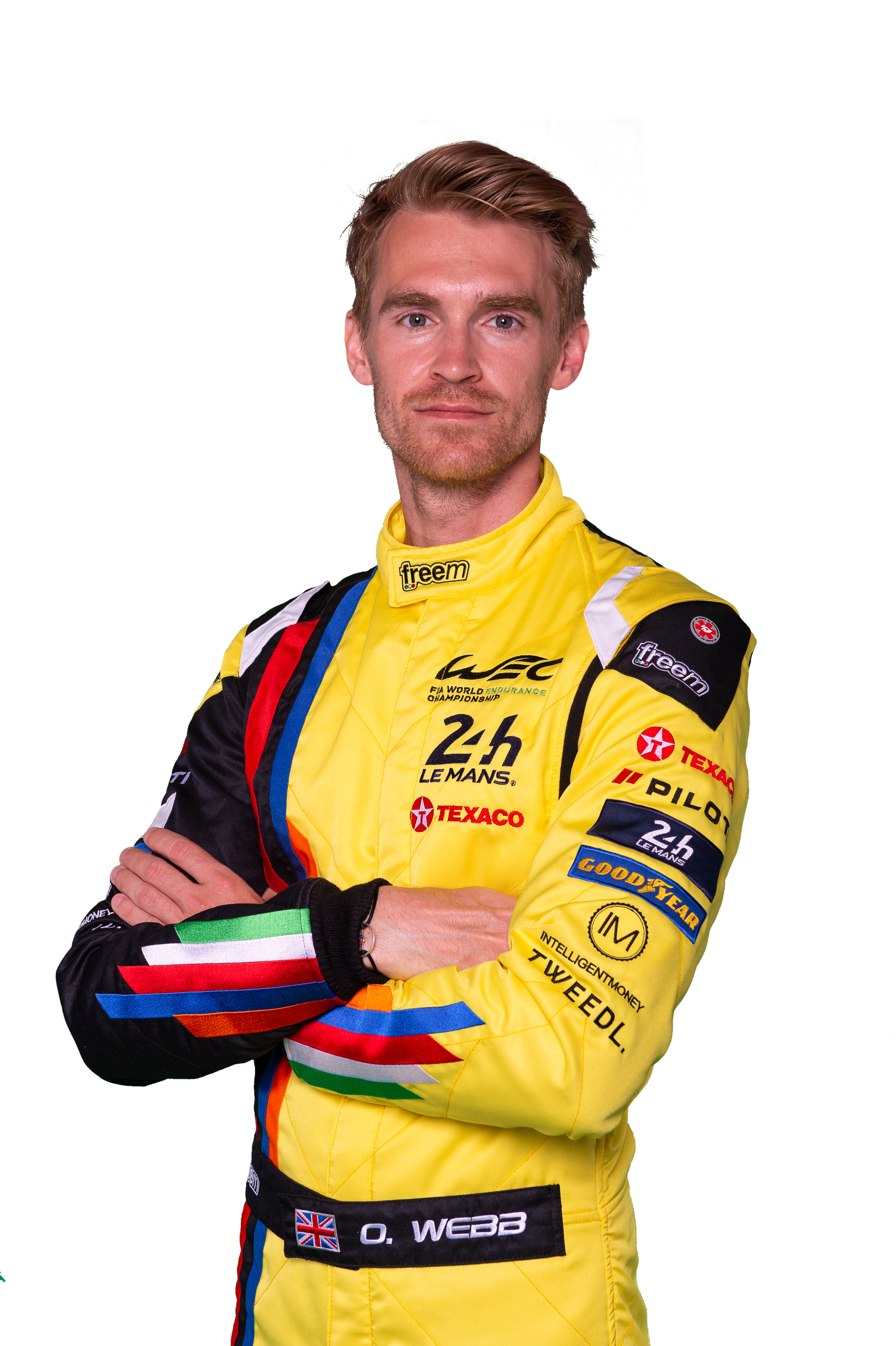
The Complete WEC Driver
Apart from their talent and bravery, what do drivers take in the cockpit with them? The small confined spaces of an LMP2 cockpit would suggest that there is room for even half of what we see in the main image above. However, clever ergonomic design in both the driving area and through the manufacturers of the drivers' safety products ensure that everything has its own snug place to fit.
Oliver Webb is currently in his first WEC season with the Team SARD Morand squad. A second place at Spa, and a fourth place at Nurburgring have earmarked the British racer as one of several endurance talents to watch for the future.
When it comes to discussing his kit and how crucial it is to both his safety and his comfort, Webb is equally impressive, giving a detailed account of what his personal equipment means to him and how it assists him performing on the world stage.
1. Oliver Webb!
Calm down ladies! We thought it prudent to ensure Oli kept his undergarments on for this shoot! But there is a serious side to these vital fire-resistant safety garments. Drivers in overalls made of Nomex fibre can survive for 11 seconds in temperatures of 840 degrees Celsius. In comparison, the maximum temperature in a sauna is 100 degrees. In a house fire it would be up to 800 degrees, while the lava in a volcanic eruption reaches between 750 and 1000 degrees.
OW: “All driver protection clothing is made from nomex which is a flame-resistant material. Applied in clothing it is very light too and has been developed over the years. Our safety clothing starts with the first layer which is what you could call ‘Long-Johns’ and the long-sleeve top.”
2. Race overalls
“Race suits have seen so much development over the last decade or so. They are so much lighter now and they last a lot longer. They are still three or four layered nomex and they can withstand fire for at least 60-seconds. The base design fits in with the team and then I apply patches/names of personal sponsors and championship sponsors. I have a three-layered suit which I generally change every season.”
3. Helmet
“I have quite a lot of detail on my helmet, which is a full carbon design, as most are now, and you’ll be paying at least £4K for one, which is moulded for the individual. On the side I have the Japanese rising sun which will be cool for the fans to see at Fuji. The black and white represents the night and day of Le Mans and then I have a Charles Dickens quote on it too which reads ‘The men who learn endurance, are they who call the whole world brother.’ I thought that was cool and I liked putting some thought in to my design.”
4. Head and Neck Safety Device
“The HANS has been mandatory ever since I started racing professionally. You soon get used to wearing it and now you almost don’t notice you have it on. It is carbon and pretty light and obviously a vital piece of safety equipment. It clips on to the side of the helmet with elastic straps and is designed to stop your back stretching and your head hitting the steering wheel.”
5. Visors
“I have a variety of different shades because we run at day and night. You have to weigh-up which ones you are going to run but applying them is actually quite simple.”
6. Race Boots & Socks
“The boots are pretty cool and are completely fireproof, as are the socks of course. You can print and customise the boots and have whatever messages you want on them. For special events like Le Mans I had a unique pair which had a clock on them in deference to our sponsor Franck Muller, which was nice. They are very thin which is obviously critical for us to get a good feel for the pedals.”
7. Gloves
“The gloves have got thinner and the nomex stitching has gone from the inside to the outside now which makes them feel very pliable. The feel you get is excellent.”
8. Balaclava
“I know some drivers still use the versions that have the eye-holes but I would find those quite invasive. The balaclava tucks under the fire-proof top. You don’t have issues with sweat as it gets soaked up by the nomex material and it is quite breathable.”
9. Ear-piece for radio comms
“This is obviously a vital piece of kit and is moulded to the ear so that we can converse with the pit-wall and vice versa. Interestingly the piece is also fitted with tiny sensors which manage the G-loadings the driver goes through if there is an accident and so the extrication team can ascertain what your body has been through and how they should treat you.”
10. Spare nomex top and bottoms
“These are spare nomex top and bottom garments that I have in my kit-bag. Again, the stitching is on the outside of these. They are very light and the top is good if you are out of the car but still want to be corporate and professional. The printed logos are all fire-retardant too.”
11. Visor tear-off strips
“These are obviously vital and are used to improve the vision from the main visor when dirt, oil or insects get smeared on. With the gloves so thin now it is easier now to locate the corner and to whip it straight off.”
12. Hydration drink
“I have a drink which has plenty of electrolytes and salts in, so the mineral loss you go through while racing is effectively replaced. It also has a lot of what are called BCAAs which help to repair muscle fibres which aids the recovery process after being at the wheel for a longtime.”
Sam Smith





